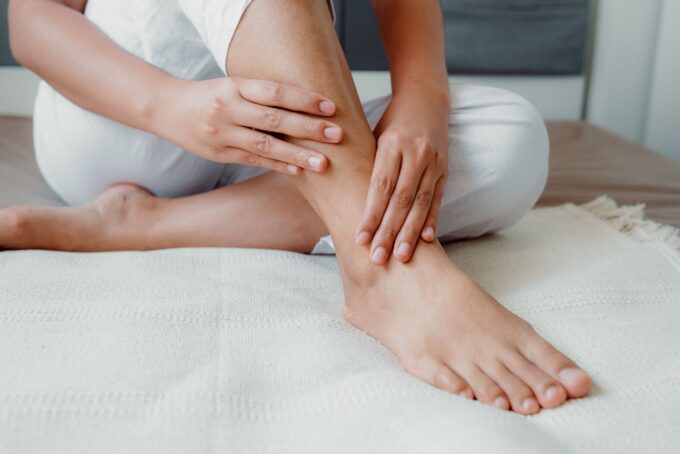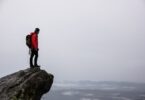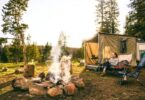Are common foot issues dragging you down every time you go on a hike? There’s nothing worse than feeling like you have more fuel in the tank, yet your feet can’t complete the journey. Then, since hiking shoes and boots can cost a pretty penny, you may find it impossible to ditch your current pair to experiment with a new brand.
If this sounds like you, the solution is to identify your foot issue and choose a hiking shoe that will accommodate it. One of the benefits you have at your fingertips is the wealth of information and reviews on the internet. This makes it easier than ever before to choose hiking footwear that agrees with common foot problems.
In this guide, you’ll be taken through a series of tips that’ll help you land on the right brand and particular shoe or boot for your unique foot problem(s).
Tip 1 – Identify Your Foot Issue

img source: prevention.com
First, identify your foot issue to choose a shoe or boot that agrees with it. Similar to choosing a good running shoe, you want to steer clear of a brand that runs narrow if you have wide feet.
For instance, Asics running shoes are usually narrow which makes them almost always a bad choice for people with wide feet.
Several common foot issues that hikers must consider when choosing footwear are plantar fasciitis, flat feet, bunions, and high arches. The main takeaway here is to identify your foot issue first before moving along to the next tip because once you know for sure what’s ailing your feet, the selection process becomes a lot easier.
Tip 2 – Match Your Foot to the Right Shoe Brands
Next, it’s time to match your foot to brands that accommodate your foot type. For example, if you have flat feet, you’ll most likely find that hiking boots with moderate arch support are your best bet. If you fall into this category, Flat-Footed Footwear provides all the info you need to land on the best hiking boot or shoe for men & women with flat feet.
Several top hiking footwear brands loved by hikers around the world are Keen, Merrell, and Salomon. For most foot issues, Keen and Merrell are the first places to look since their shoes are designed to satisfy even the most stubborn foot issues.
Beyond those three brands, you might also want to explore lesser-known premium brands such as Altra, Hoka One One, and Oboz. You’ll find that these three brands can be pricey, but they do offer some of most advanced hiking footwear available.
Tip 3 – Put Function Before Style

img source: ideasmesh.com
In the case of choosing good hiking boots or shoes for common foot problems, it’s very important not to choose footwear based on looks. Remember, hiking shoes are not designed to wow people with their style.
In reality, some of the ugliest hiking footwear is by far the best available. Just give Keen’s collection a look, and you’ll quickly realize that the company is not focused on style.
Instead, top brands aim to protect your feet while providing optimum comfort & support to help you tackle even the longest hikes. The bottom line here is to choose hiking footwear based on fit and function, not outward appearance.
Tip 4 – Get the Right Support for Your Foot Type
Choosing a supportive hiking boot should be at the top of every hiker’s list who suffers from common foot problems. By choosing a supportive hiking boot, you give yourself a better chance of muffling overpronation issues and foot pain.
This tip is especially important for plantar fasciitis sufferers who need all the support/cushioning they can get in the heel area to prevent foot pain. Additionally, a supportive shoe provides arch support for people with flat feet and high arches.
Plus, when you suffer from foot issues, you want to focus on matching the shoe’s arch support to your issue. One mistake hikers often make is to aim for too much arch support when all they need is moderate arch support to get a proper fit.
Some companies have even begun implementing innovative new designs, such as Altra’s Zero Drop that keeps the foot level yet provides extra room in the toe box for a more natural fit. So, if you’re a hiker with bunions, Altra shoes provide the type of support you need to excel on your hikes.
Tip 5 – Consider Adding an Insole

img source: amazon.com
If you’re finding that your feet aren’t reaching the level of comfort you desire on long hikes – even after choosing the right footwear – then it’s time to consider an insole. The good news is that there are insoles specifically designed for most common foot issues, and they won’t cost you an arm and a leg.
Plantar fasciitis sufferers commonly require insoles since that extra layer of cushioning in the heel might be all they need to prevent foot pain. As for people with flat feet, they commonly find that an insole that provides just the right amount of arch support prevents pain from developing in the mid-foot area along a hike.
Several insole brands that are great for hiking are Superfeet, Sole, and Spenco. Be sure to check out what those brands have to offer in their sport categories for common foot problems.
Final Tips
One of the biggest takeaways here is that it’s important to plan and do a bit of research before making your final decision. For example, if you choose a pair of hiking boots because you like the way they look without doing any research, there’s a higher likelihood of experiencing pain or foot issues while hiking.
On the other hand, if you take a bit of time to read owner reviews written by people with the same foot issue as you, you’re a lot more likely to land on the right boot the first time. Plus, when you combine that research with the tips in this guide, you’ll give yourself the best chance of a pain-free hiking experience.







